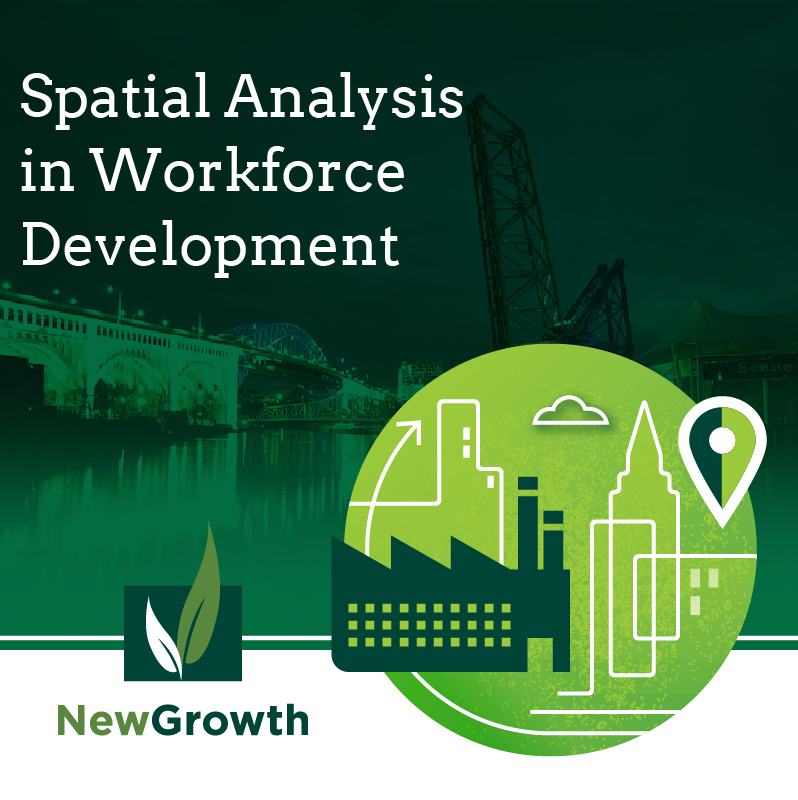New Growth uses a number of analysis tools and techniques when conducting research for workforce development projects. One of the most powerful tools in our toolbox is Spatial Analysis, a type of geographical analysis which seeks to explain patterns of human behavior and economic statistics in relation to location. We have used this type of analysis to help clients visualize how issues such as transportation or the geographical service area impact targeted populations.
Spatial Analysis in Workforce Development
Labor market data is key to understanding a region’s workforce. Employment, wages, and other key data points from the US Bureau of Labor Statistics, the US Census Bureau, and other resources inform policy and practice through their data tables and spreadsheets. However, when it comes to visualizing this information within a region, spatial analyses can be very effective. The following are some ways to utilize GIS to enhance workforce development research.
Ways to analyze existing and potential labor supply spatially are listed below:
- Educational providers may be considering a new or expanded training program, but are unsure what neighborhood best fits the program. Creating maps with key demographics can provide guidance on where a new training program may have a higher impact. For example, regions that show pockets of high unemployment or low educational attainment might benefit from an entry-level training program.
- Businesses have many factors to consider when selecting a location for a new facility. Identifying the existing or potential labor pool for that employer can help determine best fit. Mapping areas based on educational training, or job experience, among others, can help pinpoint areas that have an abundance of the potential workforce.
Below are ways to map job demand, and connect to the labor supply:
- Economic development organizations may be interested in where up-and-coming jobs are located. Using GIS, job postings data can be mapped to identify concentrations of demand. These heat maps can be custom designed to specific industries, occupations, credentials, experience, etc.
- Comparing job demand heat maps with labor supply maps helps to identify spatial mismatch in a region. If this occurs, GIS can be used to problem solve, such as factoring in public transportation route to help connect people to jobs.
New Growth incorporates Spatial Analysis through GIS and mapping on many projects. If you have a research question or a grant submission which requires a deeper level of geographic analysis, get in contact with us. We have GIS and planning experts on staff which can help you map out your next project.

